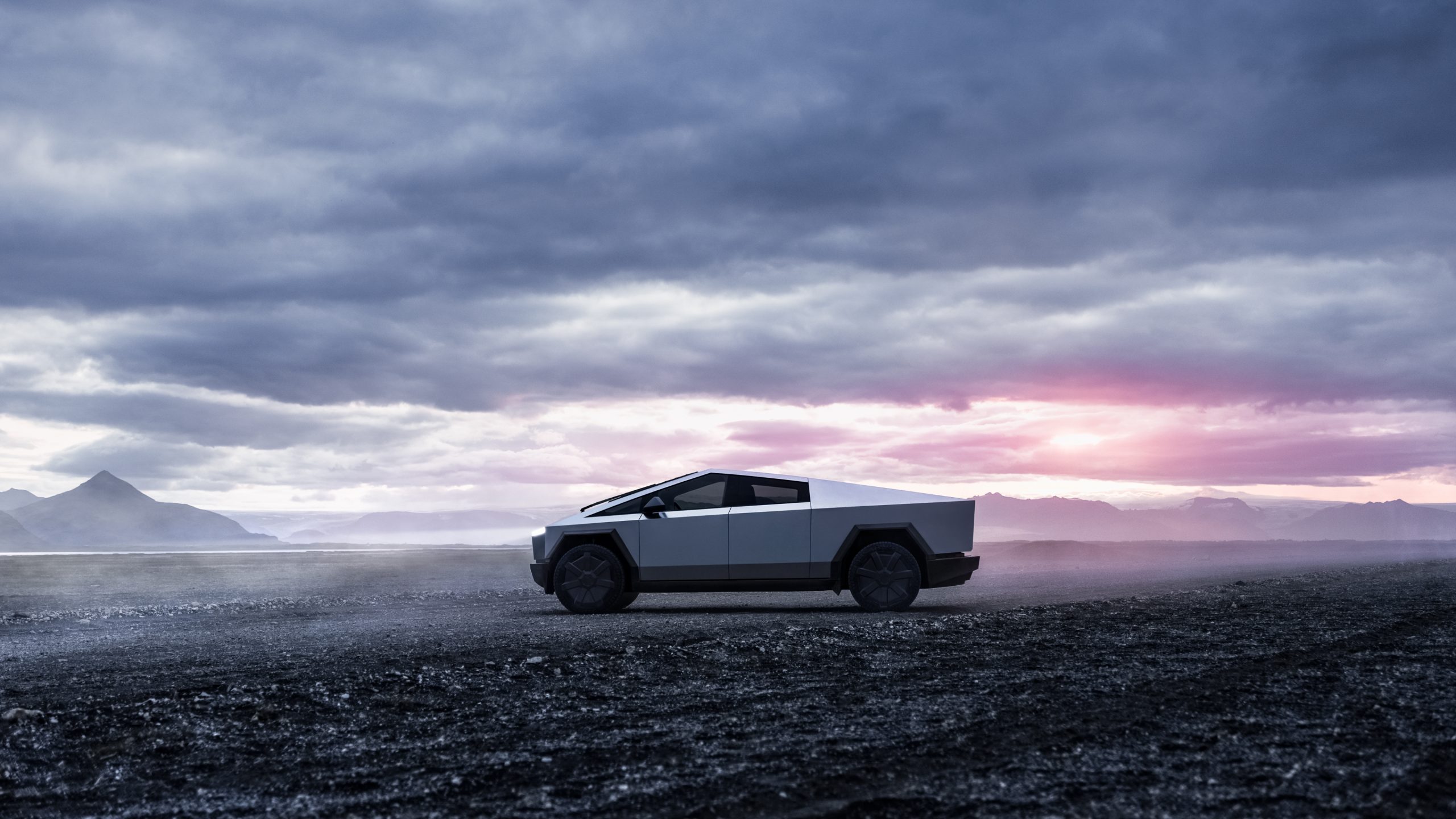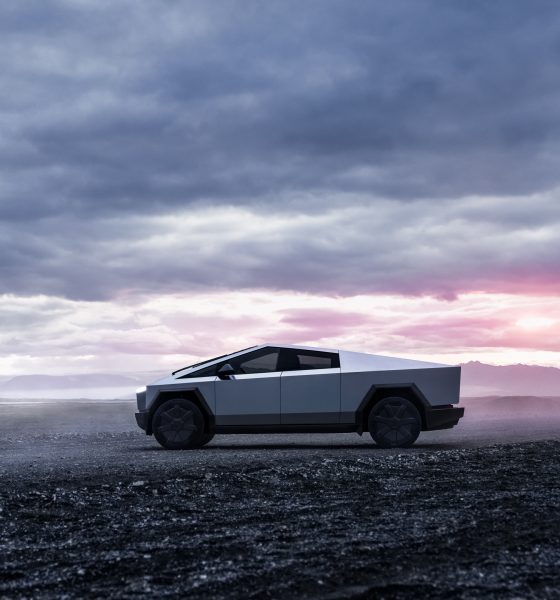Tesla Cybertruck documentation has finally been released by the EPA, and it shows some new details but nothing that is totally game-changing in terms of the pickup’s general operation or specs that were released during the unveiling event last week.
The EPA received an application from Tesla to begin the Cybertruck’s assessment on November 7, the documents seen by Teslarati show. The application notified the EPA that Tesla was seeking a Certificate of Conformity for two of the Cybertruck’s configurations.
Tesla did not apply for any certifications related to the Cybertruck’s entry-level configuration, which is the Rear-Wheel-Drive trim that will not be released until 2025.
Instead, this round of testing was reserved for the “Beast” and All-Wheel-Drive trims, which pack three and two motors, respectively. Tesla received Certificates of Conformity for both vehicles on November 21, nine days ahead of the delivery event at Gigafactory Texas.
In terms of features that we may not have been aware of based on Tesla’s presentation last week, it appears the Cybertruck has been fitted with the heat pump system that the automaker started utilizing on other vehicles in its lineup.
We did see the heat pump on some vehicles that were pre-production units, but it is now confirmed that Tesla is using the system on Cybertrucks that customers will own.
The heat pump was a major breakthrough for Tesla several years ago as it engineered a solution to combat range degradation in colder temperatures.
Tesla describes the Cybertruck’s heat pump in the EPA documents:
“Tesla Cybertruck’s heat pump reduces the energy required by the HVAC system in both heating and cooling scenarios. The energy required to heat the cabin varies by weather and occupant comfort needs, but on-average consumes approximately 10% of the total energy available for driving. However, even moderately cold weather (0°C), consumption can increase to 25% or more. A heat pump consumes a small amount of electrical energy to thermodynamically “upgrade” low-temperature (less useful) thermal energy to higher-temperature (more useful) thermal energy, making it suitable for occupant comfort. That is, for a given electrical power input, a heat pump will return 1 to 5x in useful heating power; an electrical cabin heater provides 1:1 in heating power, and therefore is far less efficient.”
It is not surprising that Tesla put the heat pump in the Cybertruck, especially considering Elon Musk said the pickup is the company’s best vehicle to date. What still remains a mystery is whether Tesla is using the HEPA grade air filter and BioWeapon Defense Mode in the pickup, which filters 99.98 percent of pollutants, making the cabin extremely safe and improving air quality.
Tesla has used the HEPA filter on other cars in its lineup, including the Model S and Model X.
The Cybertruck’s gross vehicle weight puts it in the Class 2b division. This still is technically a light-duty pickup, and it shares the classification with the Chevrolet Silverado 2500, Ford F-250, and RAM 2500.
Tesla Cybertruck Beast Epa by Joey Klender on Scribd
The application from Tesla is available here:
Tesla Cybertruck Application by Joey Klender on Scribd
I’d love to hear from you! If you have any comments, concerns, or questions, please email me at joey@teslarati.com. You can also reach me on Twitter @KlenderJoey, or if you have news tips, you can email us at tips@teslarati.com.

News
Tesla FSD fleet is nearing 7 billion total miles, including 2.5 billion city miles
As can be seen on Tesla’s official FSD webpage, vehicles equipped with the system have now navigated over 6.99 billion miles.

Tesla’s Full Self-Driving (Supervised) fleet is closing in on almost 7 billion total miles driven, as per data posted by the company on its official FSD webpage.
These figures hint at the massive scale of data fueling Tesla’s rapid FSD improvements, which have been quite notable as of late.
FSD mileage milestones
As can be seen on Tesla’s official FSD webpage, vehicles equipped with the system have now navigated over 6.99 billion miles. Tesla owner and avid FSD tester Whole Mars Catalog also shared a screenshot indicating that from the nearly 7 billion miles traveled by the FSD fleet, more than 2.5 billion miles were driven inside cities.
City miles are particularly valuable for complex urban scenarios like unprotected turns, pedestrian interactions, and traffic lights. This is also the difference-maker for FSD, as only complex solutions, such as Waymo’s self-driving taxis, operate similarly on inner-city streets. And even then, incidents such as the San Francisco blackouts have proven challenging for sensor-rich vehicles like Waymos.
Tesla’s data edge
Tesla has a number of advantages in the autonomous vehicle sector, one of which is the size of its fleet and the number of vehicles training FSD on real-world roads. Tesla’s nearly 7 billion FSD miles then allow the company to roll out updates that make its vehicles behave like they are being driven by experienced drivers, even if they are operating on their own.
So notable are Tesla’s improvements to FSD that NVIDIA Director of Robotics Jim Fan, after experiencing FSD v14, noted that the system is the first AI that passes what he described as a “Physical Turing Test.”
“Despite knowing exactly how robot learning works, I still find it magical watching the steering wheel turn by itself. First it feels surreal, next it becomes routine. Then, like the smartphone, taking it away actively hurts. This is how humanity gets rewired and glued to god-like technologies,” Fan wrote in a post on X.
News
Tesla starts showing how FSD will change lives in Europe
Local officials tested the system on narrow country roads and were impressed by FSD’s smooth, human-like driving, with some calling the service a game-changer for everyday life in areas that are far from urban centers.

Tesla has launched Europe’s first public shuttle service using Full Self-Driving (Supervised) in the rural Eifelkreis Bitburg-Prüm region of Germany, demonstrating how the technology can restore independence and mobility for people who struggle with limited transport options.
Local officials tested the system on narrow country roads and were impressed by FSD’s smooth, human-like driving, with some calling the service a game-changer for everyday life in areas that are far from urban centers.
Officials see real impact on rural residents
Arzfeld Mayor Johannes Kuhl and District Administrator Andreas Kruppert personally tested the Tesla shuttle service. This allowed them to see just how well FSD navigated winding lanes and rural roads confidently. Kruppert said, “Autonomous driving sounds like science fiction to many, but we simply see here that it works totally well in rural regions too.” Kuhl, for his part, also noted that FSD “feels like a very experienced driver.”
The pilot complements the area’s “Citizen Bus” program, which provides on-demand rides for elderly residents who can no longer drive themselves. Tesla Europe shared a video of a demonstration of the service, highlighting how FSD gives people their freedom back, even in places where public transport is not as prevalent.
What the Ministry for Economic Affairs and Transport says
Rhineland-Palatinate’s Minister Daniela Schmitt supported the project, praising the collaboration that made this “first of its kind in Europe” possible. As per the ministry, the rural rollout for the service shows FSD’s potential beyond major cities, and it delivers tangible benefits like grocery runs, doctor visits, and social connections for isolated residents.
“Reliable and flexible mobility is especially vital in rural areas. With the launch of a shuttle service using self-driving vehicles (FSD supervised) by Tesla in the Eifelkreis Bitburg-Prüm, an innovative pilot project is now getting underway that complements local community bus services. It is the first project of its kind in Europe.
“The result is a real gain for rural mobility: greater accessibility, more flexibility and tangible benefits for everyday life. A strong signal for innovation, cooperation and future-oriented mobility beyond urban centers,” the ministry wrote in a LinkedIn post.
News
Tesla China quietly posts Robotaxi-related job listing
Tesla China is currently seeking a Low Voltage Electrical Engineer to work on circuit board design for the company’s autonomous vehicles.

Tesla has posted a new job listing in Shanghai explicitly tied to its Robotaxi program, fueling speculation that the company is preparing to launch its dedicated autonomous ride-hailing service in China.
As noted in the listing, Tesla China is currently seeking a Low Voltage Electrical Engineer to work on circuit board design for the company’s autonomous vehicles.
Robotaxi-specific role
The listing, which was shared on social media platform X by industry watcher @tslaming, suggested that Tesla China is looking to fill the role urgently. The job listing itself specifically mentions that the person hired for the role will be working on the Low Voltage Hardware team, which would design the circuit boards that would serve as the nervous system of the Robotaxi.
Key tasks for the role, as indicated in the job listing, include collaboration with PCB layout, firmware, mechanical, program management, and validation teams, among other responsibilities. The role is based in Shanghai.
China Robotaxi launch
China represents a massive potential market for robotaxis, with its dense urban centers and supportive policies in select cities. Tesla has limited permission to roll out FSD in the country, though despite this, its vehicles have been hailed as among the best in the market when it comes to autonomous features. So far, at least, it appears that China supports Tesla’s FSD and Robotaxi rollout.
This was hinted at in November, when Tesla brought the Cybercab to the 8th China International Import Expo (CIIE) in Shanghai, marking the first time that the autonomous two-seater was brought to the Asia-Pacific region. The vehicle, despite not having a release date in China, received a significant amount of interest among the event’s attendees.










